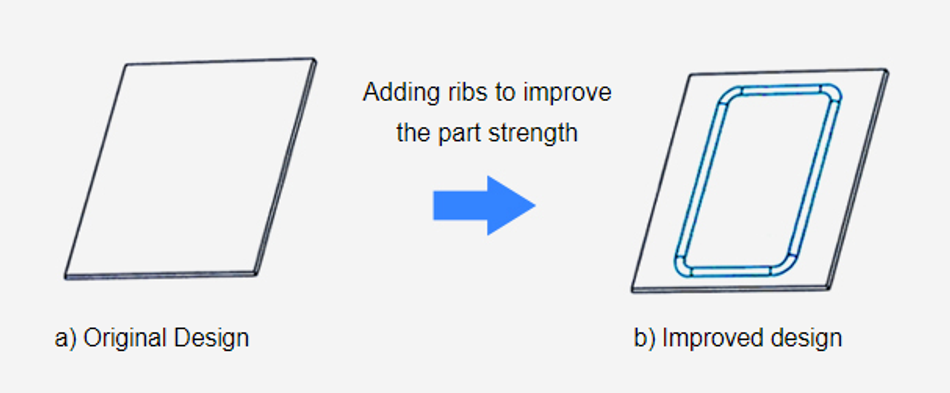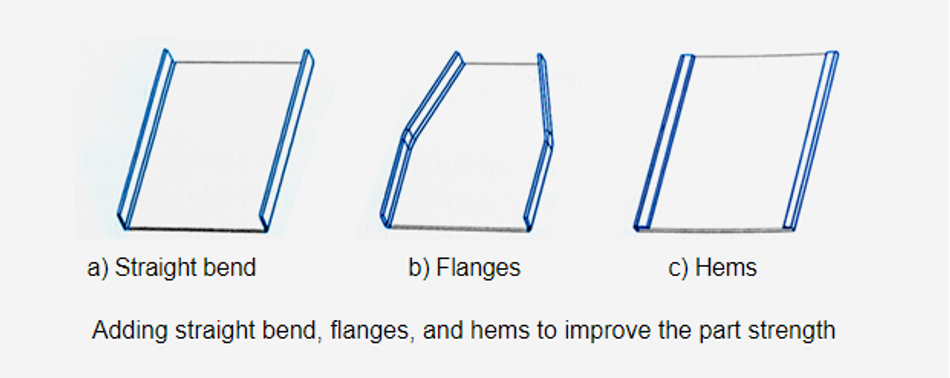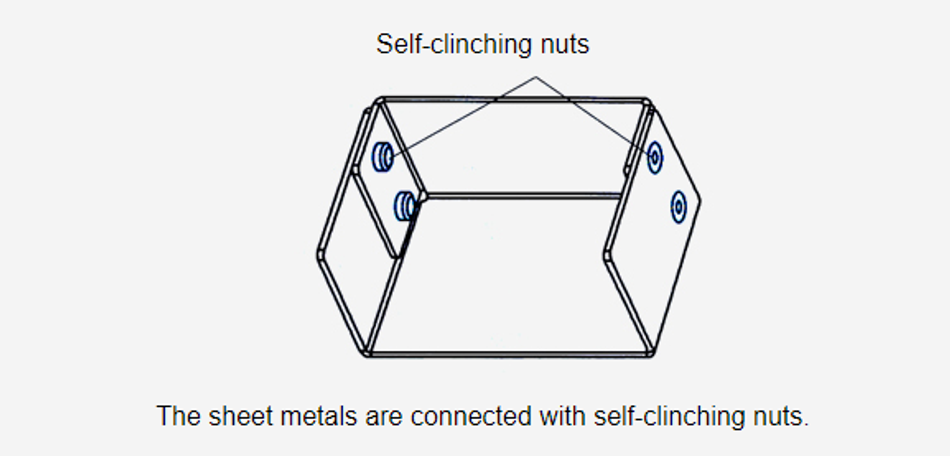5 Ways to Strengthen Your Sheet Metal Parts
When you get a piece of sheet metal, it tends to be soft and weak, and can be bent easily—comparing with the metal blocks. But if it is so weak, why product developers are still applying the sheet metal to the auto parts, or design it into enclosure, housing, bracket and much more? The fact is that the sheet metal parts can be strengthened accordingly, so that they can play their roles in different applications. In this article, we talk about some of the ways you can bolster the sheet metal parts.
Avoid the flat design
The flat sheet metal part is not strong enough, as it lacks of the structural integrity. In addition, the flat sheet metal part is easy to bend and deform under pressure. Therefore, the flat sheet metal design should be avoided. Adding ribs, flanges, or hems to sheet metal parts are suggested to bolster the sheet metal parts.

Adding ribs
Ribs are frequently used to improve the strength of sheet metal parts and reduce the deformation. The common shapes of ribs on sheet metal are arch and trapezoid. However, it should be aware that it doesn’t mean the more ribs on the part, the more bolstered the part will be. Too many ribs will also cause the deformation and bending. Meanwhile, ribs should be placed into the sheet metal parts uniformly, otherwise the uneven ribs can lead to part bending as well. The following is the common sizes of ribs.

Adding straight bend, flange or hems
The stretched sheet metal in each groove or line can compound the strength, hold tension in the panel and give it the structural rigidity. Therefore, the sheet metal parts can be bolstered. There are a number of ways to stretch lines or grooves. The following is the common methods to get the sheet metal bent.

Adding triangular ribs to bending place
To ensure the strength and angle of the bent sheet metal parts, the triangular ribs are frequently added to bending place. It’s an easy way to bolster the components.

Connecting the sheet metal parts with hardware
If you need a more robust thread or connection, an inserted hardware would be your preferred choice. Because sheet metal is thin and flat, it’s difficult to thread holes in metals. Integrating hardware into the sheet metal is also key to connect and bolster the parts. Keep in mind that the hardness of the hardware should be equal to or greater than that of sheet metal materials. Available sheet metal hardware are self-clinching nuts, self-clinching standoffs, flush-head stud, thin sheet non-flush stud and more.

Of course, you can combinate all these ways, which allow you to make a strong sheet metal parts and the greater cosmetic appearance. For more sheet metal design tips or more information about CNC machining and injection molding, feel free to CONTACT US.
